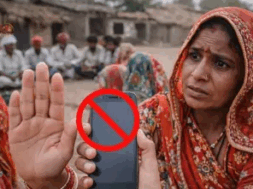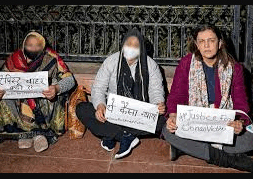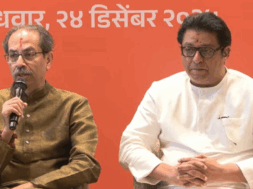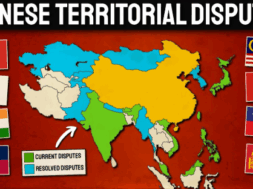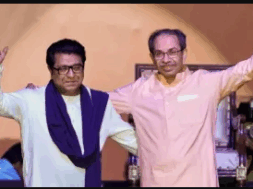
Virendra Pandit
Karnavati (Gujarat): Fathers of the Indian Constitution were well aware that India had never been a theocratic state and they, therefore, avoided insertion of the word ‘secular’ in the statute.
It was, however, introduced via the 42nd Amendment in 1976 during the Emergency, thus distorting the very inviolable essence of the Preamble, said Dr. Manmohan Vaidya, Sah Sarkaryavah (Joint General Secretary) of the Rashtriya Swayamsevak Sangh (RSS) here.
It was apparently done to camouflage the pro-minorities policies adopted by the government to appease them, he said.
Delivering a lecture on the subject of secularism on the 2nd and last day of the !7th Shri Guruji Vyakhyanmala under the auspices of the Madhav Smriti Nyas, he said that experts have told him that the Constitution does not explain words like ‘minorities’ or ‘secularism’.
He said the makers of the Constitution knew all about secularism and that India had never been a theocratic state necessitating separation of powers between the state and the Church. Constituent Assembly member K.T. Shah had introduced a bill, suggesting that India should be made a secular, socialist republic. It was discussed and debated, but all other members found it unnecessary in the context of the country’s traditions.
He explained that secularism is a European concept with a historical background. When the Roman Empire, which spread Christianity, collapsed in the sixth century, the Church assumed supreme powers of the state and the papacy shifted to the Vatican. Gradually, the people decided that the Church should confine itself to religious affairs and social functions be delegated to the state.
This was how the state became ‘secular’. It did not mean the people had also become secular. They still believed in their faiths. Those who supported this separation of powers were known as ‘secular’. But secularism never meant equality of all religions, nor it denied the Christians’ faith, not even now. And they continued to believe in the superiority of their professed faiths.
Insertion of the word ‘secular’ in the Preamble in 1976 without any discussion with others—the Opposition leaders were all jailed during the Emergency—has created a lot of confusion. Nobody knows why was it brought in. nobody demanded it either. It was not even needed as under Articles 25 to 30, India’s minorities enjoyed all the rights available to the majority community.
The word ‘secularism’, untranslatable like Dharma in any Indian language, has not only been misunderstood but also misused by many, as it gave a cover to communal politics. Its attempted translation as dharma nirpeksha or panth nirpeksha has further compounded the confusion.
Due to this long misuse and misunderstanding, anyone questioning it is at once painted as communal. To talk of Hindus has been denounced by some as anti-secular or communal. All that the minorities do or say is acceptable. To even talk of the Hindus is like offending others. Secularism has become a façade to fan communal feelings. If a politician goes to a Mazar, he is secular; but if he goes to a temple, he is communal.
“To share the stage with Owaisi is secular; to share the stage with Yogiji is communal”, Dr. Vaidya remarked.
He regretted that Dr. Manmohan Singh, as Prime Minister, had even declared that the minorities, particularly Muslims, had the first right on the resources of India. This patently communal statement was publicized as a secular act.
No individual needs to be secular because every Indian has his or her own religion to follow. Even an atheist cannot be called secular. The Americans do not shy away from taking oath on the Bible. “We all have a system; the state is an apparatus which should be secular. No Hindu need be especially secular. In the Indian context at least, anyone claiming to be secular is just lying.
Instead, the state should be secular, he said, citing an example of the Gujarat State Road Transport Corporation Ltd (GSRTC). This is expected to be secular so that no passenger will be discriminated against on the basis of his or her religion. Special concessions can be given to needy children, aged people, women, etc, but not on the basis of religions.
Dr. Vaidya said India never interfered in anybody’s personal religions. The Jews, the Parsis, and the Syrian Christians came to India and settled down here following their faiths freely and constructing their shrines. They were different ethnically and linguistically. The freedom of Hindutva provided them the common ground. The kings never interfered in their faiths and equally respected them all.
But by introducing secularism, politicians tried to start the state’s preferential treatment of some religions.
He asserted that the state should treat all religions equally. It should audit the properties and assets of all shrines or leave it to the people. In minority-run educational institutions, the students come from the majority but are not taught their religions. Let the parents decide where to put their wards.
No other country, except India, provides a state subsidy for performing the Hajj pilgrimage, although the pious should fund it from their own resources. This subsidy is neither Islamic nor secular but goes on. The state must treat everybody at par and not interfere with their religious affairs.
He also narrated the evolution of the Indian national flag. The first flag was designed by Sister Nivedita in 1905, using the symbol of Vajra from sage Dadhichi’s story. It signified purity of life, sacrifice, and strength in killing the demon.
Subsequently, Mahatma Gandhi approved of a ‘national’ flag in 1920 but the Sikhs called it communal. Led by Master Tara Singh, they met Gandhiji in 1929 and wanted the yellow color to be added to red, white, and green. The Congress Working Committee (CWC) formed a flag committee in 1931 to decide—with Jawaharlal Nehru, Sardar Patel, Maulana Azad, Tara Singh, Pattabhi Sitharamaiah, Dr. Hardikar, and Kaka Kalelkar as its members.
After deliberations, the committee unanimously decided that the national flag should be non-communal, and in a single color. They selected Indian tradition’s saffron/Kesari color as the most acceptable one in a rectangular shape with a blue charkha.
“But I am not recommending it. I wanted to explain the thought process that went into the flag-making,” he said.
However, the one that was then considered secular and national, has now become communal. The Vande Mataram, Ram Rajya, Gohatya were all national issues; now they are seen by some as communal.
This paradigm shift in national narrative has been due to a lack of clear understanding of the two keywords, Dharma and secularism.
“We must free ourselves from this confusion. The makers of India were all wise people who understood Indian traditions and had a clear goal for the country’s future insight. We should call a spade a spade and relieve dharma from the narrow meaning of religion.”
(Concluded)

